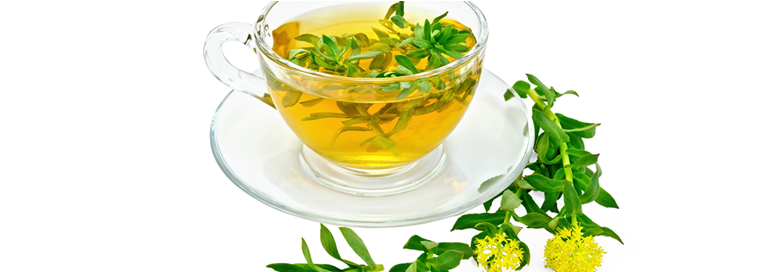
Here’s something you’re unlikely to hear from a dermatologist…
Research now proves oxygen turns back the clock on your skin.
I’m talking about hyperbaric oxygen therapy, or HBOT for short.
Part of the reason your skin develops wrinkles, sags, lines, dark spots, and falls victim to the sun and environmental damage is the dwindling supply of oxygen available to your cells as you age.
Over time, the tiny capillaries that carry oxygen-rich red blood cells become thicker. This makes them less effective at delivering oxygen to your skin.
And without enough oxygen, your skin cells die – and your skin ages.
But that’s only half the story.
When you’re young, your skin stem cells simply replace dead cells with new ones. But as you age, you lose this ability to regenerate lost cells.
But HBOT rejuvenates your skin in four ways:
- It saturates skin cells with oxygen, resuscitating them and restoring function.
- It stimulates growth factors in your blood platelets,7878 and the growth of new blood vessels.
- It activates your stem cells to make new skin cells. A study out of the University of Pennsylvania School of Medicine found that after just one HBOT treatment, stem cell concentrations doubled – but after 20 treatments, they increased a staggering 800%.1
- It increases the synthesis of nitric oxide (NO), one of your body’s key signaling chemicals. NO dramatically increases blood flow and oxygen delivery to tissues throughout your body. Multiple studies also show that NO signals the release of stem cells.2,3
Is Your Skin Gasping for Air?
Your skin is made up of three layers – the epidermis, or outside layer, the dermis in the middle and a layer of protective fat at the bottom, called the subcutis.
And none of the cells that make up these layers can function without enough oxygen.
Young skin gets plenty of oxygen from the environment. But as skin ages, it loses this ability to retain and utilize oxygen for normal metabolic processes – including protection, repair, and regeneration.
Oxygen is also essential for the production of collagen and elastin, the two most important structural proteins that give your skin its shape, resilience, and texture.
Hyperbaric oxygen therapy can also reduce the damage associated with the number one cause of skin aging – sun overexposure.
Japanese scientists exposed animals to intense UVB radiation. The animals that received HBOT had less skin damage and fewer wrinkles than those that did not.4
If you would like more information about undergoing therapy at the Sears Institute for Anti-Aging Medicine and how it might help you, please contact my staff at 561-784-7852. They’ll be happy to explain everything to you.
And if you can’t travel to my clinic, there are still ways to get more oxygen into your blood.
Flush Your Skin With Fresh Oxygen
-
- First, take cordyceps sinensis: This mushroom grows only above 11,000 feet in the Himalayas – and it’s a medical miracle of nature. Research shows that Cordyceps has the power to “turn on” genes that increase oxygen delivery to the cells. Studies showed that Cordyceps increased cellular oxygen absorption by up to 40%.5,6 You can take Cordyceps sinensis supplements in capsule form, liquid, or as a tea.
- Next, eat more beets: Beets boost your body’s production of nitric oxide – thanks to the large amount of nitrates in the root vegetable. This is one of the best dietary ways to increase oxygen intake. Nitric oxide sends “blood flow signals” that relax arterial walls and dilate the blood vessels and capillaries. This improves blood flow and oxygen to every part of your body – including the tiny intricate network of capillaries in your epidermis. And remember, nitric oxide is also a stem cell booster.
- Then, boost oxygen with this herb. Rhodiola rosea is a flower that grows in high mountain ranges around the world. Research proves that rhodiola increases oxygen intake in the lungs and helps saturate the blood.7 This herb also stimulates red blood cell production to keep blood vessels healthy and growing. Enjoy rhodiola in a tea. Or you can supplement, I recommend daily doses of 200 mg for the best effect.
To Your Good Health,

Al Sears, MD, CNS
1. Thom SR, et al. “Stem cell mobilization by hyperbaric oxygen.” AJP Hear Circ Physiol. 2005;290: H1378–H1386.
2. Boykin JV, et al. “Hyperbaric oxygen therapy mediates increased nitric oxide production associated with wound healing: a preliminary study.” Adv Skin Wound Care. 2007 Jul;20(7):382-8.
3. Beltran-Povea A, et al. “Role of nitric oxide in the maintenance of pluripotency and regulation of the hypoxia response in stem cells.” World J Stem Cells. 2015;7(3):605–617.
4. Kawada S, et al. “Increased oxygen tension attenuates acute ultraviolet-B-induced skin angiogenesis and wrinkle formation,” American Journal of Physiology. Aug 1 2010: 299(2).
5. Huang XZ, et al. “Increased Aerobic Capacity in Healthy Elderly Humans given fermented Cordyceps Cs-4: a Placebo controlled Trial.” Meeting American College of Sports Medicine, Seattle, WA, June 3-5, 1999.
6. Singh M, et al. “Cordyceps sinensis Increases Hypoxia Tolerance by Inducing Heme Oxygenase-1 and Metallothionein via Nrf2 Activation in Human Lung Epithelial Cells.” BioMed Research International. 2013 ;Article ID 569206, 13 pages.
7. de Bock K, et al. “Acute Rhodiola rosea intake can improve endurance exercise performance.” Int J Sport Nutr Exerc Metab. 2004;14(3):298-307.








